Engines: Power of choice
06 February 2020
Katherine Weir talks to engine manufacturers about the future of diesel power and how electric and hybrid technologies are being received by construction industry professionals in Europe
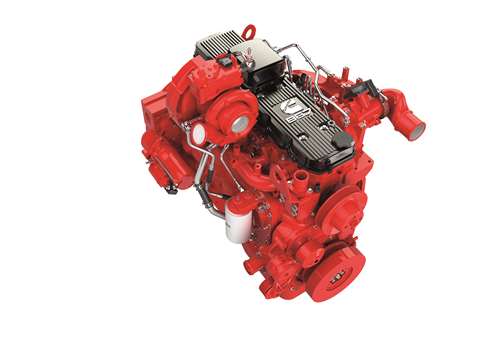
Since 1 January 2020, only engines that meet EU Stage V emissions standards can be manufactured. Smaller engines – up to 56 kilowatts (kW) – had to meet EU regulations by January 2019, while engines between 56kW and 129kW had to be Stage V ready by the start of 2020.
As well as looking at making diesel engines ‘cleaner’, manufacturers are also investing time and money into different types of power sources for equipment, such as hybrid and electric engines to meet emissions regulations and address environmental concerns. Advancements in engine design, fuel injection and exhaust aftertreatment technology have already contributed to the reduction in nitrogen oxides (NOx) and particulate matter (PM).
The choice of power solution rests on original equipment manufacturer (OEM) equipment design and customer requirements, duty cycle and cost. The construction industry is increasingly embracing the potential of these powertrains, although for some there is still some convincing needed to encourage investment.
Engine manufacturer Cummins introduced its latest engine range, the Performance Series, to allow its customers to ‘produce machines and equipment that meet and exceed the latest European Stage V emissions regulations’.
Greater power density

Steve Nendick, off-highway marketing communication director at Cummins, said, “Equipment manufacturers are striving to develop machines that are cleaner, more reliable and deliver higher productivity. This is possible because continuous advancements in engine technology deliver greater power density than previous generations.
“These demands are integral to the design of our latest engine range, the Performance Series. Ranging from 75 to 503 kilowatts (kW), they have significantly higher power density when compared to their Stage IV predecessors, delivering on average 10% more power and 20% more torque across the 75 to 321kW range.”
Operators and OEMs also benefit from the Performance Series’ less complex design with no exhaust gas recirculation (EGR), reduced weight and size, and an ‘easy-to-package’ aftertreatment system – the Cummins Single Module, Cummins said.

Japan-based Yanmar has its EU Stage V TN series, introduced at Intermat 2018 and recently shown at the Hanover, Germany, Agritechnica exhibition in November 2019 – where special attention was given to the manufacturer’s 4TN101 and 4TN107 industrial engines, 3.8-litre and 4.6-litre respectively.
Yanmar said that the TN series – with 55 to 155kW engines – has an excellent power/torque ratio to meet the requirements of a wide variety of industrial fields, including the heavy work in construction and materials handling.
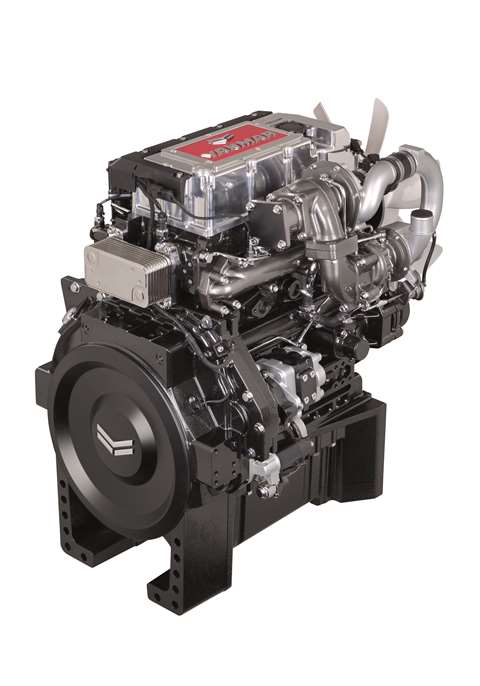
Serial production of the 4TN101 engine, producing 55 to 105kW, is planned for 2021. For the two-stage turbo-charged 4TN107 (90 to 155kW) engine, production began at the end of 2019. The 4TN107’s two-stage turbocharger can achieve a maximum torque of 805 Newton metres (Nm).
UK-based Perkins has 14 different Stage V ready engine models from 0.5 litre to 18 litre, which deliver power from 8.2 to 470kW.
Performance across its Stage V range has improved in three main ways, the engine manufacturer said. Power density – the amount of power you get from a package size, has increased by up to 28%. Torque, meanwhile, has increased by up to 29% and significant fluid consumption – namely fuel and diesel exhaust fluid (DEF) improvements, have also been made across the range.
All of these, the company says, mean that OEMs can downsize and reduce cost without compromising on performance.
The future of diesel
Although Perkins is strongly rooted in diesel engines for the off-highway market, it has made a ‘significant investment’ in hybrid engines and electrification research.

In 2019, the company announced new hybrid technologies for three of its engines adapted to meet the specific needs of construction machines. The hybrid-electric, hybrid-mechanical and hybrid-hydraulic power technologies ensure that OEMs and their customers benefit from machines that are more productive, quieter and have lower fuel consumption, whatever power solution they select, Perkins said.
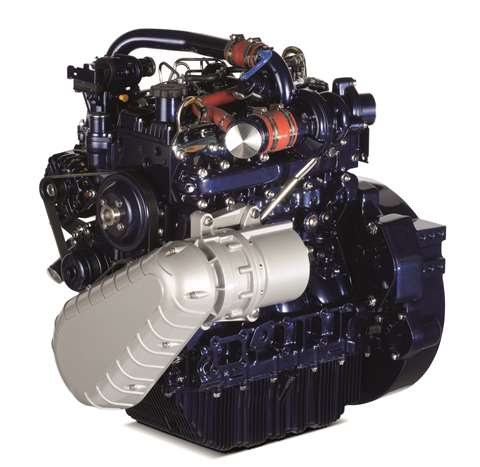
The hybrid-electric solution incorporates an electric motor or generator; the hybrid-mechanical stores energy in a high-speed flywheel which can be delivered back to the machine; and the hybrid-hydraulic stores energy in hydraulic accumulators.
The company’s Expanded Offering Team was created to provide the ‘close technical collaboration’ required to meet customers’ needs. Tom Nankervis from this team, said, “Some hybrids have the capability to run with zero emissions, which can be valuable when travelling through an occupied building to get to a job site. Hybrids can also help to downsize the engine and this in turn can reduce noise levels around the job site. In applications where diesel costs are significant, hybrids can be used to reduce the overall fuel bill by up to 20% based on the application.”
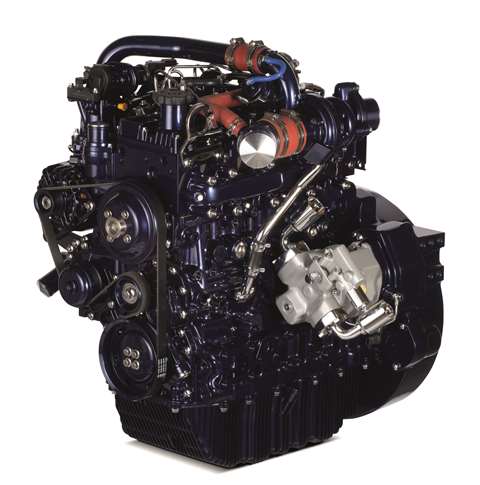
Looking to the future of alternative powertrains, Nankervis said, “The adoption of hybrids will be driven by economics. We can see some specific subsets of the major applications moving to hybrids such as wheel loaders in bulk material loading applications and telehandlers shuttling loads between operations.”
Perkins is offering hybrid and electric technologies across its EU Stage V power range from 6 to 470kW.
The future of power tech
Nendick at Cummins said, “Changes are clearly happening in the industry and the future of power has never looked so diverse. Hybridisation, full-electrified and fuel cell drivelines for construction applications are emerging as feasible power solutions for the construction sector. Cummins is at the forefront of developing these technologies. At Bauma, Munich, 2019 we showcased an all-electric mini excavator prototype, and in 2018, Cummins acquired fuel cell and hydrogen production technologies provider Hydrogenics Corporation.”
“The differences in scale, operating region and the duty cycle of equipment means not one size fits all,” he said. “Electrification, hybrid technology and the latest clean diesel power all possess different attributes which suit different types of machine.”
The manufacturer still sees a strong future for diesel. “Whilst we anticipate a shift towards electrification in smaller equipment, particularly ones which operate in urban environments, diesel will be the primary source of energy for larger construction equipment for many years to come,” said Nendick.

JCB has announced the release of a compact 3.0-litre EU Stage V diesel engine to its mid-range machines. It will be offered on the 531, 535 and 540 Loadall models, 3CX backhoe loaders, large platform skid steer and compact track loaders, 6 to 9 tonne site dumpers, RTFLs and 13 tonne excavators.
The four-cylinder DieselMAX engine is said by JCB to be 24% smaller and 30% lighter than the manufacturer’s own 4.4-litre EcoMAX powerplant, yet offers 10% higher torque output, with a ‘real world’ 5% fuel saving. Particulate and NOx control technologies combine the diesel particulate filter (DPF) and diesel oxidation filter (DOC) in a single unit. The engines have autostop technology for further emissions reduction, JCB said.
The engine is fully integrated with JCB’s LiveLink telematics system, providing operating information in real-time for customers and dealers. JCB dealers will also provide a manufacturer-backed DPF/DOC refurbishment program and be able to deliver a ‘de-emissionisation’ strategy for used equipment exports to ‘non-emissionised’ territories.
Designing for lower environmental impact
Nendick at Cummins said, “Our Stage V solution, making the engines more compact yet delivering more capability and lowering the impact on the environment, points the way for future engine development.
“Emission changes have driven engine and equipment product development for the last 20 years or so. Given that the next step in emissions legislation (Stage VI) is some way off, manufacturers will be able to focus on tailoring engine operation to equipment types and their specific duty cycles for optimum efficiency and productivity.”
At the last Bauma exhibition in Munich, Deutz placed its focus on drive systems for zero-carbon off-highway applications. The engine manufacturer – said to be the oldest in the world – can now offer individual combinations of diesel, gas, hydrogen, hybrid and electrified drives as part of a modular product system.
Dr Frank Hiller, chairman of the Deutz board of management, said, “Our Advanced Configurator, a modular system for customised drive solutions, gives customers the optimum combination of conventional and electric drives. Because the modular system is highly adaptable to shifts in the market, we can quickly supply solutions that are not only individually tailored but also reduce carbon emissions, fuel consumption and overall costs.”
As well as electrified drive solutions, the company’s drive concepts include combustion engines that can run on a carbon-neutral basis by using hydrogen and other alternative fuels. A hydrogen variant of its TCD 7.8 engine was presented at Bauma – the product of a research partnership with Munich-based start-up Keyou.
‘Ultra-efficient’ diesel
New for diesel is the four-cylinder in-line engine with an ‘ultra-efficient’, selective catalytic reduction system. The TCD 5.2 is the first in-line engine from Deutz that complies with the EU Stage V emissions standard without the need for EGR. It is said by Deutz to deliver up to 170kW.
Other new engines for Deutz include the three-cylinder TCD 2.2, based on the four-cylinder TCD 2.9, with both engines available as liquid petroleum gas variants: G 2.2 and G 2.9 respectively. These machines are created with low-loading applications in material handling and compact construction field in mind.
Stage V-compliant loaders launched by Hyundai CE
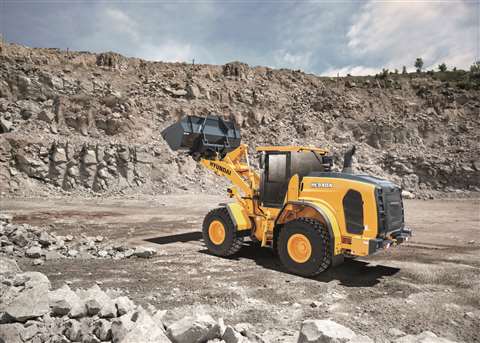
Hyundai Construction Equipment Europe (HCEE) has released a range of Stage V compliant heavy wheeled loaders in response to strong demand in the European market.
The company says that the A series offers enhanced performance and productivity, additional safety features and improvements in uptime and operator experience.
The HL940A, HL955A and HL960A share common key features, including the new Cummins Stage V compliant engine platform, a fuel-efficient Power Smart mode, a modified cabin interior and enhanced operator controls and improvements in the design of the axle, linkage and main control valve (MCV).
The Cummins engine includes an all-in-one exhaust after-treatment system, requiring no manual diesel particulate filter (DPF), regeneration or exhaust gas recirculation (EGR).
Operators can use three Intelligent Work Modes (Power, Power Smart and Economy) allowing full engine power when required, or reduced fuel consumption, dependent on the application. Hyundai says use of the Power Smart mode leads to reduced energy losses resulting in fuel savings of between 3 and 5%.
Additionally, says the company, optimised engine performance means higher torque at lower rpm.
Shared engine production for Deutz and Sany

Germany-based Deutz and its joint venture partner Sany announce that their agreement to establish shared engine production in China came into effect at the end of 2019. As well as various off-highway applications, Deutz is also taking over the manufacture of heavy-truck engines for Sany as part of the joint venture.
In the initial stage, the plan is to build around 75,000 new engines in 2022 at a new factory in Changsha, capital of the province of Hunan. Production is scheduled to start in 2021.
The province of Hunan supports the joint venture and is contributing several tens of millions of US dollars in additional funding to the project.
Dr Frank Hiller, chairman of the Deutz board of management, said, “We are delighted to have Sany on board as our strong partner with which we can bring this important project to fruition. Deutz has extremely positive prospects for making full use of the still huge potential offered by the Chinese market.”




